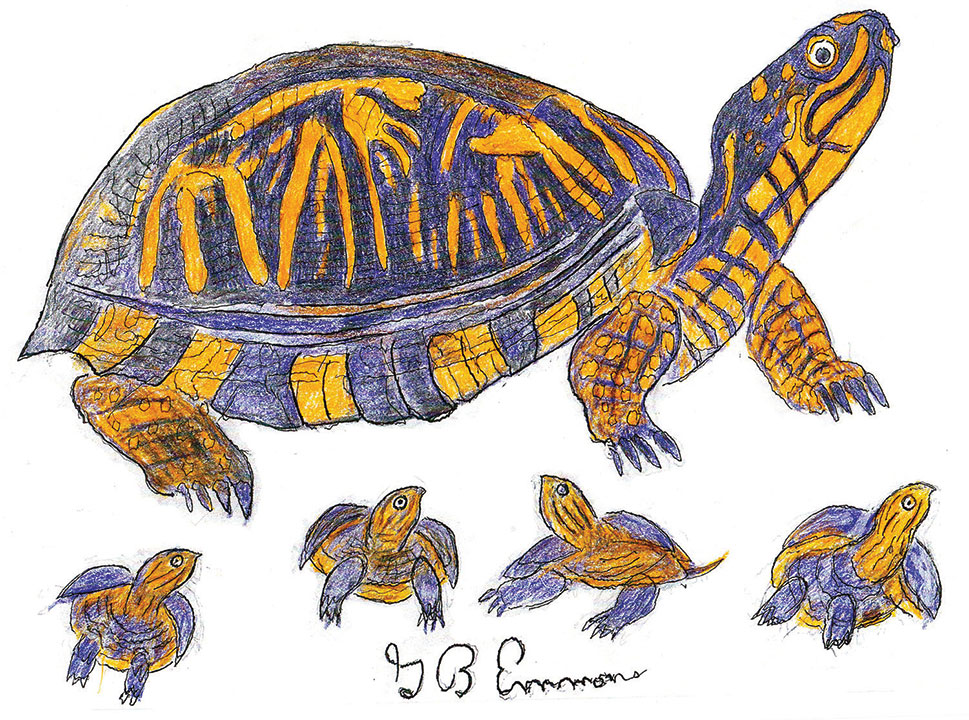The box turtle is a common and colorful member of the terrestrial tortoise family. It has an ornate orange decorative shell with bony plates hinging at the bottom to retract its legs and head for protection against predators. Because it is slow and vulnerable, thousands of these placid turtles are killed crossing highways every year or are collected from the wild as pets by children.
Taking a turtle from the wild is not recommended, as many will eventually die from the stress of having been removed from their habitat.
Turtles appeal to youngsters, possibly because they read Aesop’s Fables about the Tortoise and the Hare, a moral lesson of ancient Greek mythology written 2,000 years ago. Aesop’s fable taught that achievement of impossible goals, as a turtle winning a race with a hare, could be achieved by youngster determination.
Box turtles are omnivorous and seem to eat almost everything in a varied diet of insects, earthworms, and millipedes. However, as they grow older, they turn to a 90 percent vegetable diet.
A box turtle can live as long as 50 and possibly even 100 years; however, the box turtle is listed as a threatened species. The most hazardous part of this lifetime relay into longevity is the starting point of the laying of the egg and into the hatching phase when they strike off on their own.
As illustrated, they are so small and visibly vulnerable enough to be easily taken by minks, skunks, raccoons, dogs, rodents, and even by crows and ravens.
The relay race of the box turtle against extinction has surprisingly turned a corner, thanks in part to some local high school students who have been handed a remarkable educational baton of life-giving learning. Inside the laboratory of nearby Bristol County Agricultural High School, turtles are being hatched, fed, and raised during the winter and then released, when much larger, into the wild the following spring. The U.S. Fish and Wildlife Service is overseeing the effort as a possible augmentation of state and federal fish hatcheries. It may be only fitting that the youth are the ones weaving a safety net to fall back on, in case the threatened box turtle grows nearer to becoming endangered.
The popular box turtle is among the oldest reptiles in the world, going back to the end of the Cenozoic geological age. This was the very beginning of life on Earth for all living creatures. It is said that the reptiles were among those that first crawled up on dry land out of the oceanic primordial soup.
The future of ancient life on this planet may be supplemented and saved by the next generation of students of environmental awareness.
By George B. Emmons

They like the fruits from these three plants: Wild Strawberry (Fragaria virginiana), Mayapple (Podophyllum peltatum), and Jack-in-the-Pulpit (Arisaema triphyllum.) The Mayapple, and the Jack-in-the Pulpit are deer-resistant, as well. I plant all three in my yard.